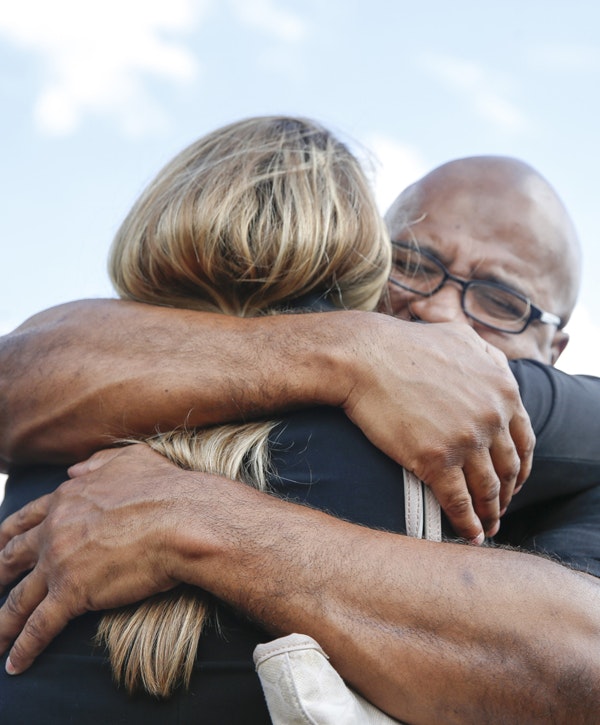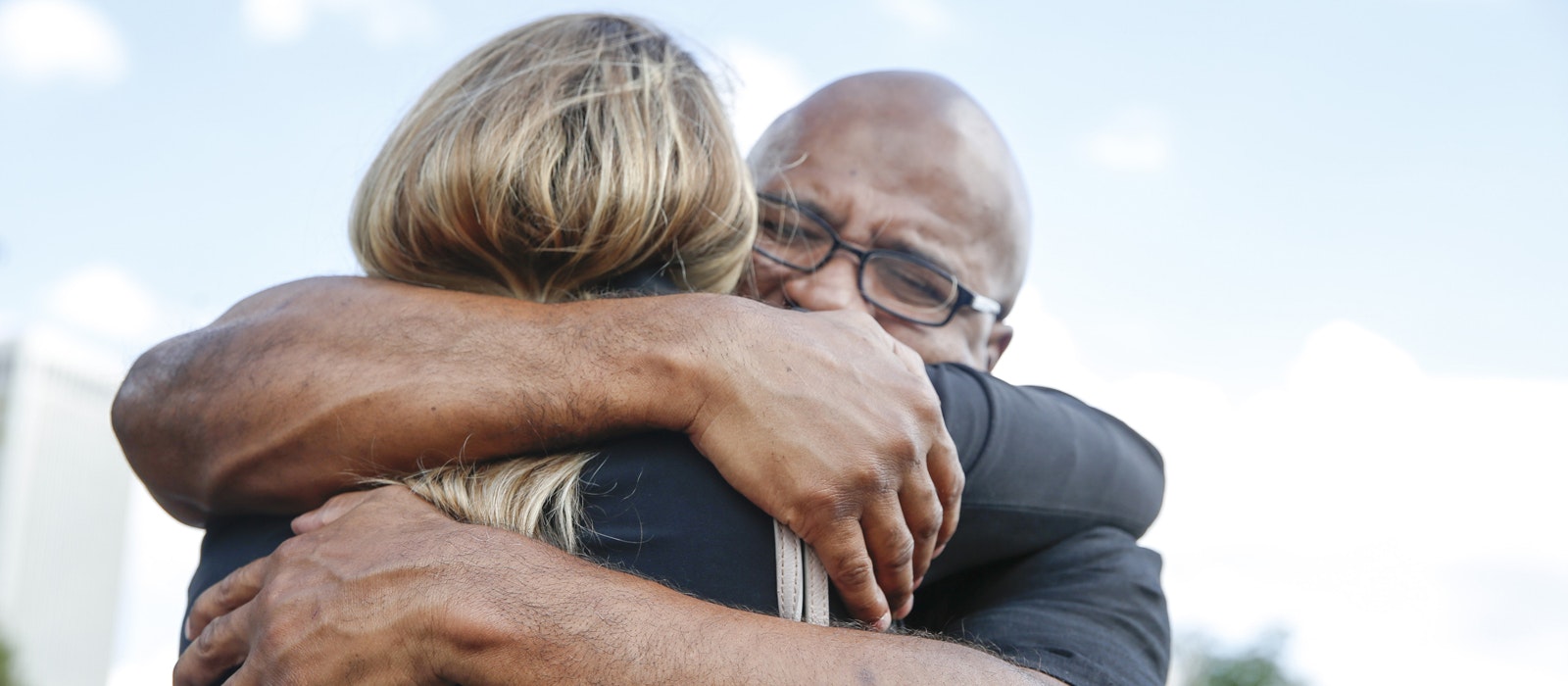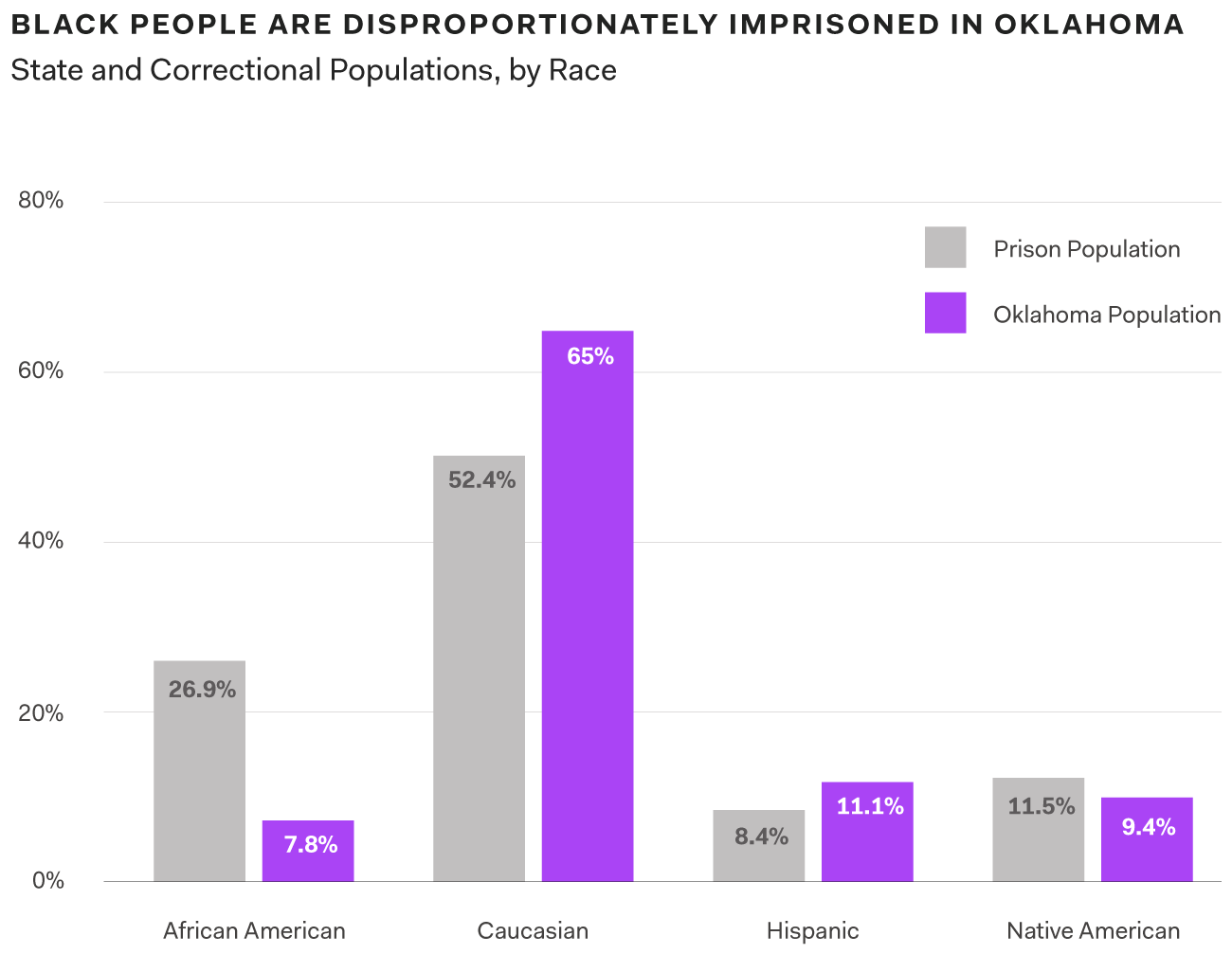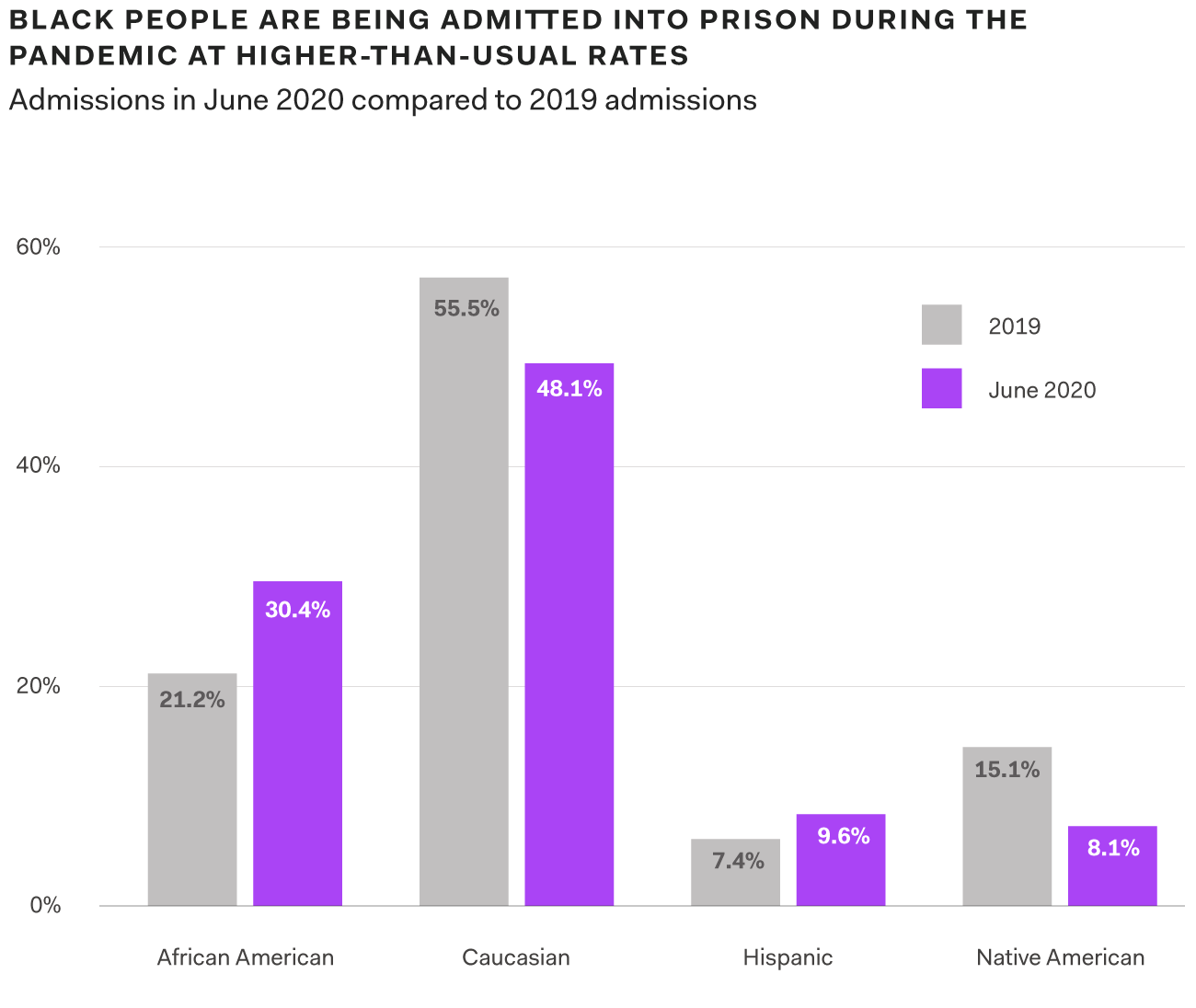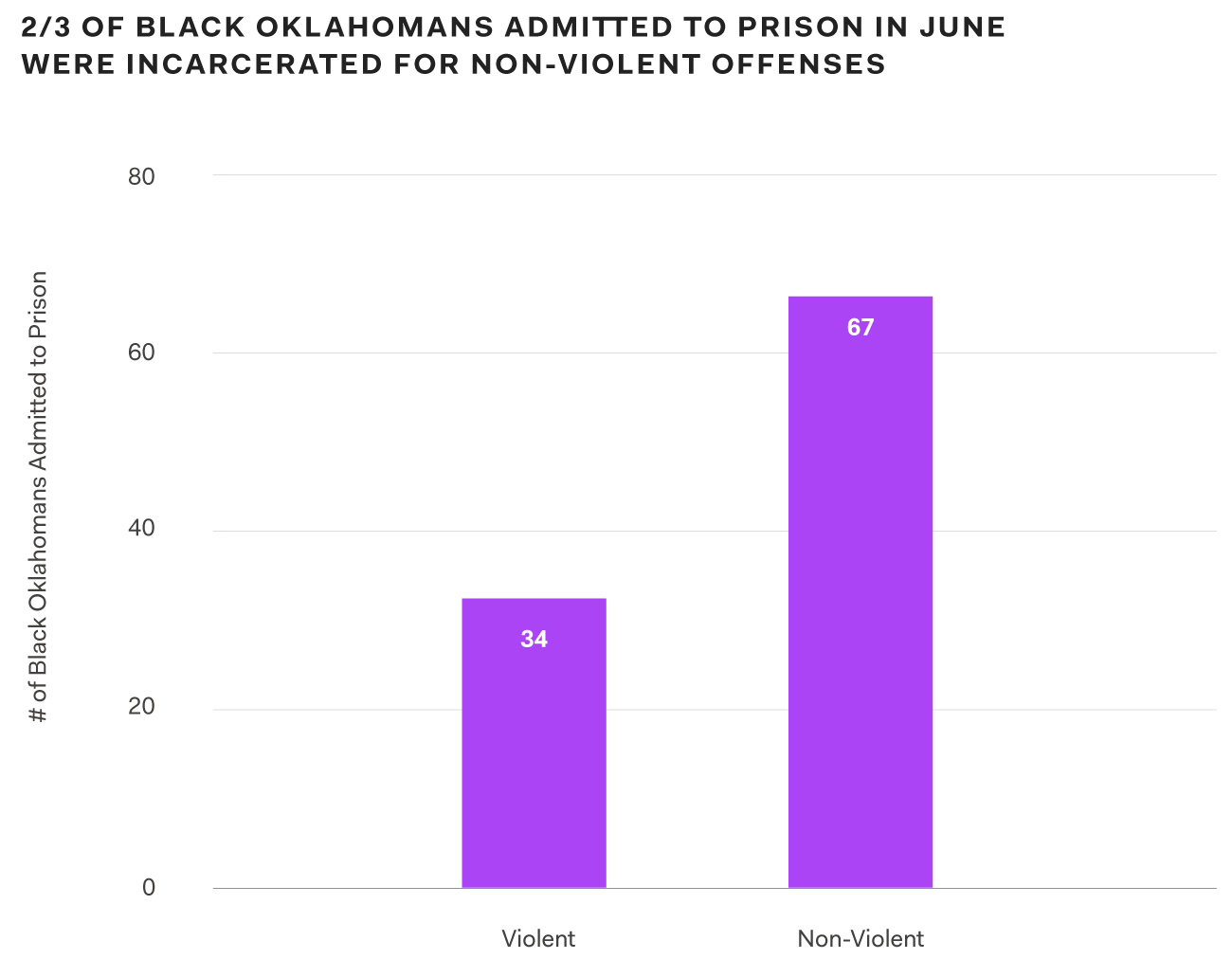Background
As COVID-19 continues to spread, incarcerated people and those who work in jails and prisons are particularly vulnerable. Overcrowding and other conditions make it virtually impossible to practice social distancing and maintain an adequate level of sanitization.
Statistics released by the Oklahoma Department of Corrections show that incarcerated people have far higher positive rates for COVID-19 than the state average. More than a quarter (25.7%) of the incarcerated population tested for COVID-19 were positive over the last nine months, leading to 36 deaths possibly related to the virus (including 11 in November alone).1
The Department of Corrections announced in March that they would work with local Sheriffs to stop new admissions from county jails across the state. However, new analysis of the most recently available prison admissions data from March through June 2020 shows that more than 300 people were admitted to DOC custody in June.2 Of those people, Black Oklahomans were sent to prison at even higher rates of disproportionality than usual – all as COVID-19 cases behind bars began to rise.3
